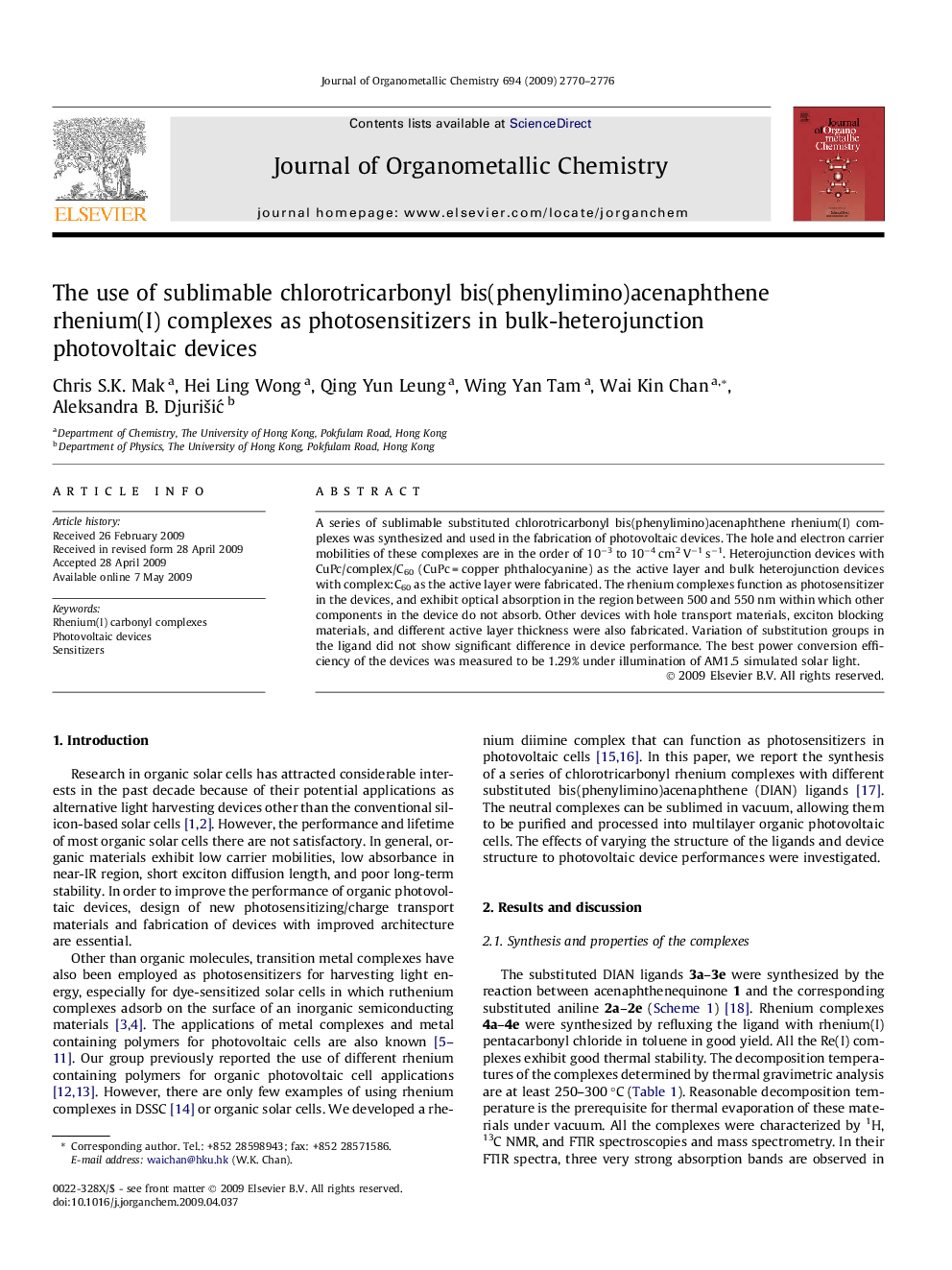| Article ID | Journal | Published Year | Pages | File Type |
|---|---|---|---|---|
| 1327326 | Journal of Organometallic Chemistry | 2009 | 7 Pages |
A series of sublimable substituted chlorotricarbonyl bis(phenylimino)acenaphthene rhenium(I) complexes was synthesized and used in the fabrication of photovoltaic devices. The hole and electron carrier mobilities of these complexes are in the order of 10−3 to 10−4 cm2 V−1 s−1. Heterojunction devices with CuPc/complex/C60 (CuPc = copper phthalocyanine) as the active layer and bulk heterojunction devices with complex:C60 as the active layer were fabricated. The rhenium complexes function as photosensitizer in the devices, and exhibit optical absorption in the region between 500 and 550 nm within which other components in the device do not absorb. Other devices with hole transport materials, exciton blocking materials, and different active layer thickness were also fabricated. Variation of substitution groups in the ligand did not show significant difference in device performance. The best power conversion efficiency of the devices was measured to be 1.29% under illumination of AM1.5 simulated solar light.
Graphical abstractA series of sublimable rhenium complexes was used in the fabrication of bulk-heterojunction photovoltaic cells. The active layer of the devices composes of a blend of rhenium complex and C60, and the optical absorption by the complex plays an important role in photosensitization process.Figure optionsDownload full-size imageDownload as PowerPoint slide
